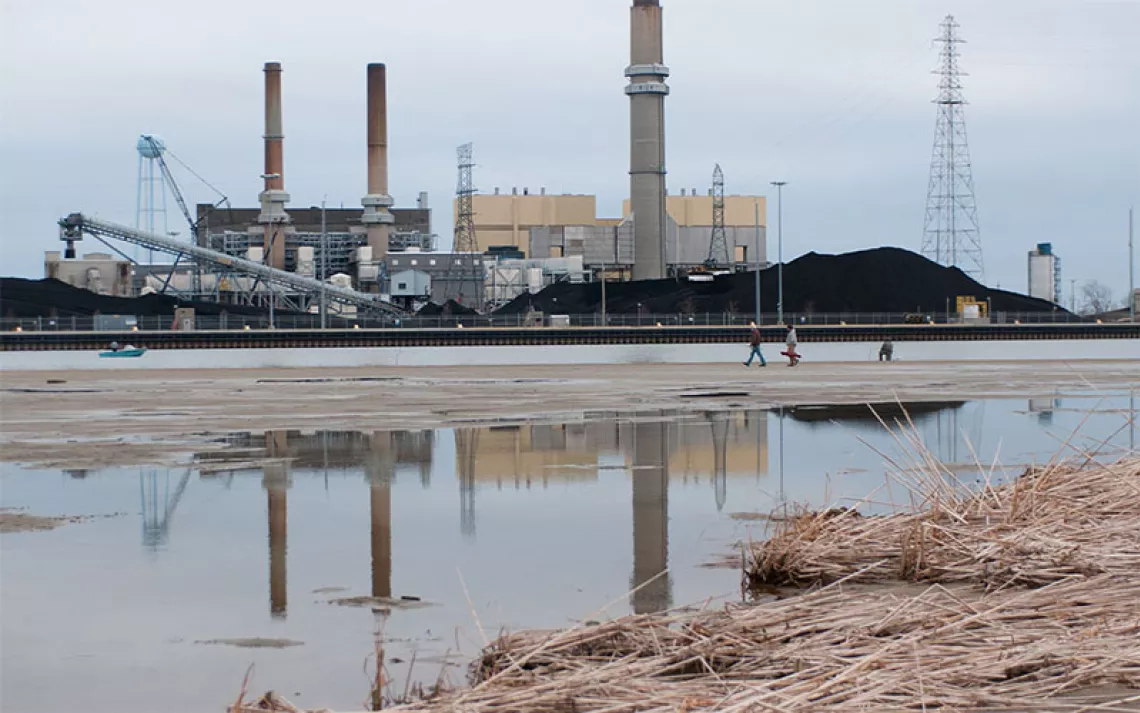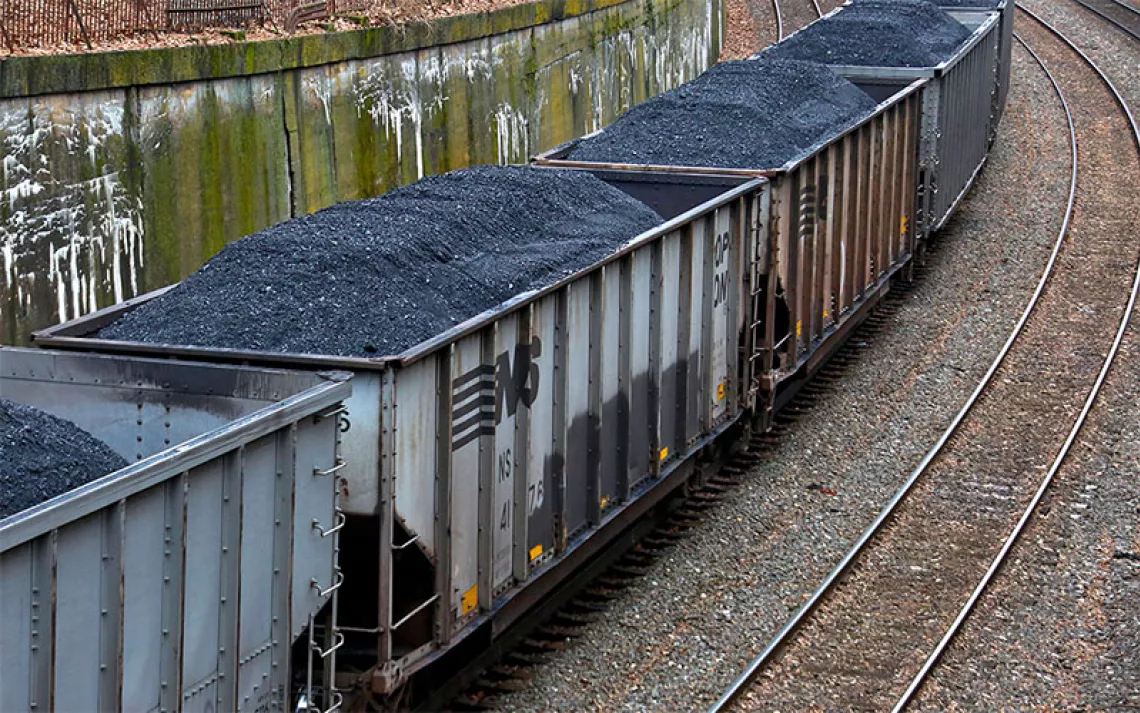North Carolina to Duke Energy: Clean Up Your Coal Ash
Dramatic move to keep toxic chemicals out of groundwater and rivers

A coal ash site next to the Roanoke River in Roanoke Rapids, North Carolina. | Photo by AP Photo/Steve Helber
In a dramatic move on Monday, April 1, North Carolina environmental regulators ordered Duke Energy to excavate and remove toxic coal ash from unlined storage sites at six power plants. Toxic chemicals concentrated in coal ash have been shown to cause cancer and nerve damage, and to impair brain development. For a century of coal-fired energy production, this waste product has been dumped, often in unlined landfills and ponds. But at six power plants in North Carolina, that will now change.
Frank Holleman, a senior attorney with the Southern Environmental Law Center, calls it “a historic achievement for the state of North Carolina” and for all those who have worked to protect people and water from Duke Energy’s coal ash pollution. Duke had previously proposed merely placing caps on the unlined pits, but with this order, North Carolina joins South Carolina and Virginia in deeming such “cap-in-place” closures inadequate in light of the high risks of groundwater pollution.

Now is the time for environmental journalism.
Sign up for your Sierra magazine subscription.
With this action you affirm you want to receive Sierra Club communications and may vote on policy designated by the Sierra Club Board.
Those risks were highlighted in a report, released on March 4 by the Environmental Integrity Project (EIC) and Earthjustice, which found that nine out of 10 coal-fired power plants are contaminating groundwater with dangerous pollutants.
In the past, concerns about coal ash have focused on catastrophic failures of storage facilities, like the massive structural failure in Kingston, Tennessee, in 2008, when 5 million cubic yards of coal ash spilled out of a failed levee, destroyed dozens of homes, and allegedly contributed to the deaths and illness of scores of cleanup workers.
Mobilization around the 2008 incident eventually led to the Coal Ash Rule, a set of regulations passed in 2015 that mandated coal plants to monitor and release data about their coal ash storage sites. The first batch of information was released to the public in March 2018 and led to the EIC/Earthjustice report. Industry didn’t make it easy: While the results and dates of groundwater samplings could have been listed as a simple chart, only the technical lab reports themselves were released, with the results difficult to discern. “There’s no doubt that the industry had data in a readable and useable form,” said Lisa Evans, coauthor of the report and senior counsel at Earthjustice.
Earthjustice and EIP, among other organizations, spent the last year sorting through the data. Out of the 265 sites analyzed, more than 242 were leaking contaminants into the surrounding groundwater. Beneath a family ranch an hour south of San Antonio, for example, concentrations of cadmium and lithium over 100 times the levels designated safe by EPA had leached into the groundwater. Nineteen miles southeast of Washington, D.C., lithium and molybdenum are found, sometimes at 200 times safe levels, with the pollutants now feeding into local streams. There are similar levels of lithium and molybdenum near a coal plant north of Biloxi, along with arsenic at triple its safe concentration.
Abel Russ, senior attorney at the EIP and lead author of the report, warns that the situation is likely worse than the data shows. Sites that were not accepting coal ash as of 2015 were not required to release information, and even at the sites that were required to provide data, the information is often incomplete. Russ estimates that only half of the country’s coal ash is accounted for in this report, leaving out many sites that are poorly monitored or not monitored at all. “It’s a bad problem,” Russ said, “but it’s even a little worse than it looks.”
In North Carolina, however, it’s now looking a little bit better.
 The Magazine of The Sierra Club
The Magazine of The Sierra Club



